ANIMALS
What Makes Macaws So Interesting
Published
3 months agoon
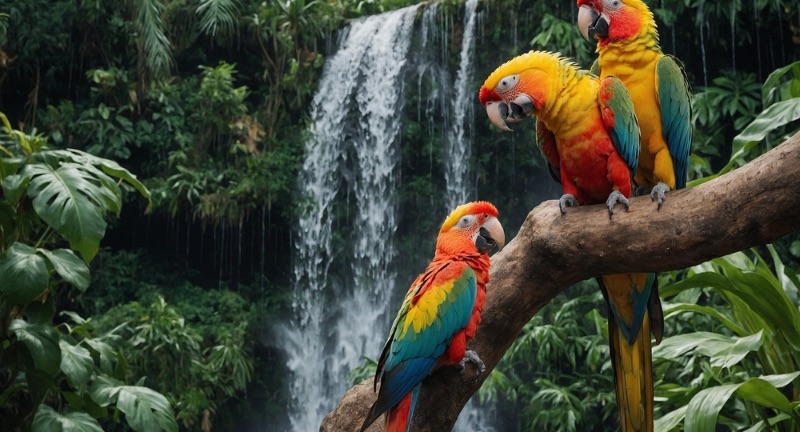
Shutterstock
Macaws are probably the most recognizable bird in the wild. These creatures are extremely bright and colorful and have very interesting personalities. Macaws have the ability to mimic human speech and are often kept as pets. These birds are also highly respected in several cultures. With such bright and eye-catching colors, what’s not to be interested in? In this article, we will show you 25 fun and interesting facts about macaws.
Macaws are parrots

Shutterstock
Macaws belong to the parrot family, known for their vibrant colors and intelligence. They are large birds, with some species growing up to 3 feet in length. These birds are highly social and live in large flocks in the wild. Parrots like macaws are known for their ability to mimic sounds and human speech.
They have strong, curved beaks

Shutterstock
Macaws have powerful, curved beaks designed to crack open nuts, seeds, and other tough foods. Their beaks are also used for climbing and gripping branches. The beak strength allows them to manipulate objects with great dexterity. It is one of the main reasons macaws are considered one of the most intelligent bird species.
Macaws are social birds

Shutterstock
Macaws are highly social and live in flocks, often numbering in the dozens. In the wild, they rely on social bonds for survival, such as protection from predators. They also communicate with each other through calls and body language. Macaws in captivity also thrive in pairs or groups, as they need constant interaction to stay happy and healthy.
They can mimic human speech

Shutterstock
Macaws are known for their ability to mimic human speech, a trait common to many parrots. This ability allows them to replicate words, phrases, and even sounds they hear regularly. While they don’t always understand the meaning behind the words, they are skilled at imitating sounds with precision. Their capacity to mimic is a sign of their intelligence and social nature.
Macaws are native to Central and South America

Shutterstock
Macaws are primarily found in tropical rainforests, woodlands, and savannas of Central and South America. They inhabit regions ranging from southern Mexico down to parts of Argentina. These birds are often seen flying across open skies or perched on the tall trees of the rainforest canopy. The majority of macaw species are endemic to specific regions, making them vital to the local ecosystems.
Their tail feathers are long

Shutterstock
Macaws are known for their stunningly long tail feathers, which can be over 3 feet in length in some species. These feathers help them maintain balance and aid in steering during flight. The tail feathers are often vibrant in color, matching the bird’s overall bright plumage. They are also used in mating displays and communication with other macaws.
Macaws can live for decades

Shutterstock
Macaws are known for their impressive longevity, with some species living for 50 years or more in the wild. In captivity, they can even exceed 70 years of age with proper care. Their long lifespan is partly due to their ability to adapt to various environments and their relatively low risk of natural predators. Older macaws are often regarded as wise, especially in their social groups.
They are brightly colored

Shutterstock
One of the most striking features of macaws is their vibrant, multicolored feathers. Their colors range from brilliant blues and greens to fiery reds and yellows, making them easily identifiable. This bold coloration is not only beautiful but also serves as camouflage in their natural habitats, blending in with tropical flowers and foliage. The colors vary by species, with each one having its unique combination of shades.
Macaws form lifelong pairs

Shutterstock
Macaws are known to mate for life, with pairs forming strong bonds that last for decades. These pairs often engage in mutual grooming, play, and coordinated flight. Their deep connection ensures they can successfully raise their offspring and protect each other. This monogamous behavior is essential for their survival and well-being in the wild.
They use their feet to hold food

Shutterstock
Macaws are unique in that they use their feet like hands to hold and manipulate food. This adaptation is part of their zygodactyl foot structure, where two toes point forward and two point backward. This gives them a firm grip on objects, helping them crack nuts and hold fruits. Their feet also aid in climbing and navigating their treetop habitats.
Macaws are excellent climbers

Shutterstock
Macaws are skilled climbers, using their strong feet and beaks to navigate the treetops with ease. They often perch on high branches, using their feet to grasp and climb trees. This ability helps them search for food and avoid predators. Their impressive climbing skills are a result of their evolutionary adaptation to a life in the rainforest canopy.
Their diet includes fruits and nuts

Shutterstock
Macaws enjoy a varied diet consisting mainly of fruits, nuts, and seeds. They also consume flowers and leaves, depending on the species and availability. Their strong beaks are ideal for cracking open hard nuts and seeds, which provide essential nutrients. In the wild, macaws play a role in spreading seeds, helping to regenerate the forest.
Macaws are endangered in the wild

Shutterstock
Many species of macaws are considered endangered due to habitat loss, poaching, and the illegal pet trade. Deforestation in tropical rainforests is a major threat to their survival, as it disrupts their natural environment. Conservation efforts are being made to protect macaw populations, including habitat restoration and legal protection. Some species have seen recovery thanks to these efforts, but others remain at risk.
They are intelligent problem-solvers

Shutterstock
Macaws are highly intelligent, capable of solving complex problems and using tools. In the wild, they often find innovative ways to access food and overcome obstacles. This intelligence is coupled with strong memory skills, enabling them to remember faces, places, and tasks. Their ability to adapt and learn makes them highly trainable in captivity.
Macaws communicate with vocalizations

Shutterstock
Macaws use vocalizations to communicate with each other, expressing emotions, warnings, and requests. Their calls can be loud and are often heard across the rainforest, allowing them to stay in contact with their flock. These vocalizations are a key part of their social structure, helping to maintain group cohesion. In captivity, macaws also learn to mimic human speech, further demonstrating their vocal prowess.
Their wings are powerful for flying

Shutterstock
Macaws have strong, broad wings that enable them to soar across vast distances. Their flight is fast and agile, allowing them to navigate the dense rainforest with ease. The powerful wings also help them escape predators and find food in their expansive habitats. In captivity, macaws enjoy flying as a form of exercise and enrichment.
Macaws have zygodactyl feet

Shutterstock
Macaws have zygodactyl feet, meaning they have two toes pointing forward and two pointing backward. This foot structure gives them a strong grip, perfect for holding onto branches, food, and other objects. It also helps them climb with ease and perform tasks like opening food shells or cracking nuts. This unique trait is shared by other birds like woodpeckers and owls.
They are playful and curious

Shutterstock
Macaws are naturally playful and curious, often exploring their surroundings with enthusiasm. They enjoy interacting with objects and other animals, using their beaks and feet to manipulate them. This playfulness is essential for their cognitive development and social bonding. In captivity, they benefit from enrichment activities that stimulate their curious nature.
Macaws play an important role in seed dispersal

Shutterstock
Macaws are vital to the ecosystems in which they live due to their role in seed dispersal. As they eat fruits and nuts, the seeds often pass through their digestive systems and are deposited in different areas. This helps to spread plant life across the rainforest, ensuring plant diversity. The macaws’ feeding habits encourage the growth of various tree species in their habitats.
They can remember faces

Shutterstock
Macaws are known for their strong memory and ability to recognize faces. They can distinguish between familiar and unfamiliar individuals, both within their species and humans. This ability is crucial for navigating their social structures, where knowing who is who can affect interactions. Their memory helps them avoid threats and build strong bonds with mates and flock members.
Macaws preen each other

Shutterstock
Preening is a significant part of a macaw’s social behavior, as it strengthens bonds between mates and flock members. They use their beaks to clean each other’s feathers, removing dirt and parasites. This mutual grooming also serves as a way for macaws to display affection. Preening plays a critical role in maintaining the birds’ health and hygiene.
They have a third eyelid

Shutterstock
Macaws, like many birds, have a third eyelid called a nictitating membrane. This membrane protects their eyes from dust, debris, and bright sunlight while still allowing them to see. It also helps keep their eyes moist and clean. The third eyelid is a vital adaptation for birds that live in such dynamic and often harsh environments.
Macaws can live in rainforests and savannas

Shutterstock
Macaws can thrive in a variety of habitats, including tropical rainforests, mangrove forests, and open savannas. In rainforests, they inhabit the dense canopy, while in savannas, they nest in taller trees. Their ability to adapt to different environments is crucial for their survival in the wild. The presence of macaws in these ecosystems helps maintain the balance of plant and animal life.
They can weigh up to 4 pounds

Shutterstock
Macaws are among the largest parrots, and some species can weigh up to 4 pounds. Their size, combined with their strong wings and beaks, makes them powerful birds in flight. While they are heavy compared to other birds, their lightweight bones help reduce their weight for efficient flying. Their impressive size also contributes to their commanding presence in their natural habitats.
Macaws are featured in folklore and culture

Shutterstock
Macaws have a significant presence in many cultures, especially among indigenous people of Central and South America. They are often featured in myths, art, and stories, symbolizing freedom, beauty, and power. Their vibrant colors and intelligence have made them a subject of admiration throughout history. In modern times, macaws are still revered, appearing in various forms of art and media worldwide.
Conclusion

Shutterstock
Macaws are really just amazing birds. But as we have seen, they are more than just their fun-colored tail feathers. While many species of macaw face extinction in the wild, the species as a whole is still as beautiful as ever. There are many places online where you can support conservation efforts and help these amazing birds. We hope that you have learned something new, and who knows, maybe a macaw will be your next pet.
More Amazing Animals+
-
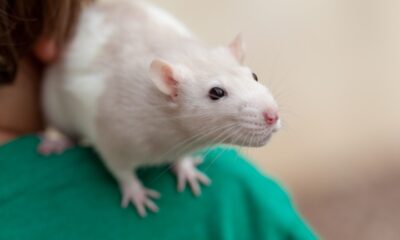

Who Knew? 33 Reasons Rats Are the Perfect Pet
-


33 Things Dogs Can Do That Cats Can’t
-
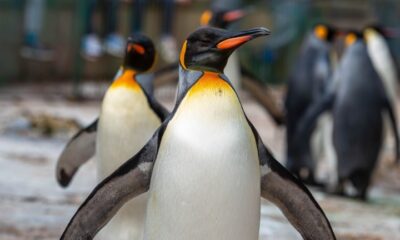

Why We Love Penguins
-


What Makes Anglerfish And Frogfish So Unique?
-


‘Horrifying’ Dog Meat Trade Overseas Motivated Beauty Blogger To Start…
-
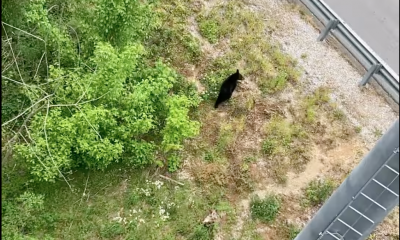

Bear sightings from the Anakeesta Chairlift! #WildBears #MomandCubs
-
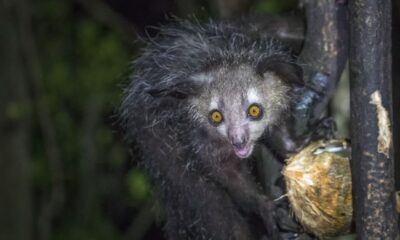

26 Intimidating Animals That Are Actually Big Softies
-
24 Most Interesting Facts About The Amazon River
-
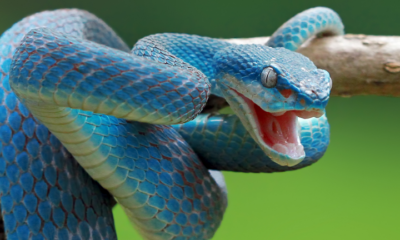

12 Of The Deadliest Snakes In The World
-


24 Animals That Have The Strangest Defense Mechanisms
-


Alligator Crosses the Walkway with Bird Looking On in Hunstville,…
-


More – Alligator arrest outside of a school in Charleston,…
